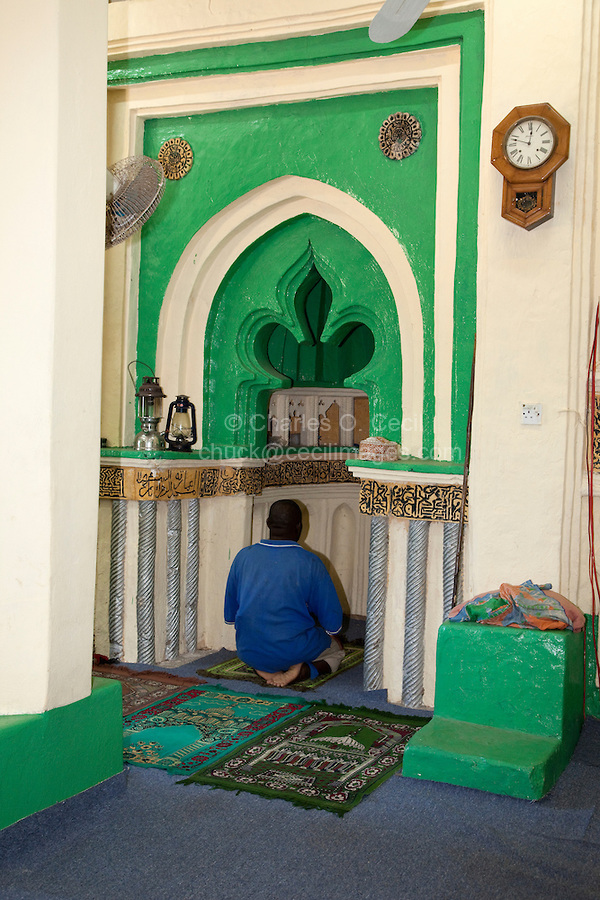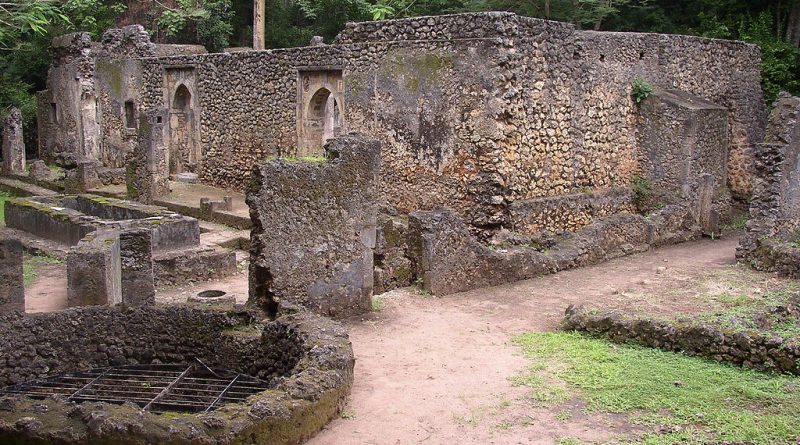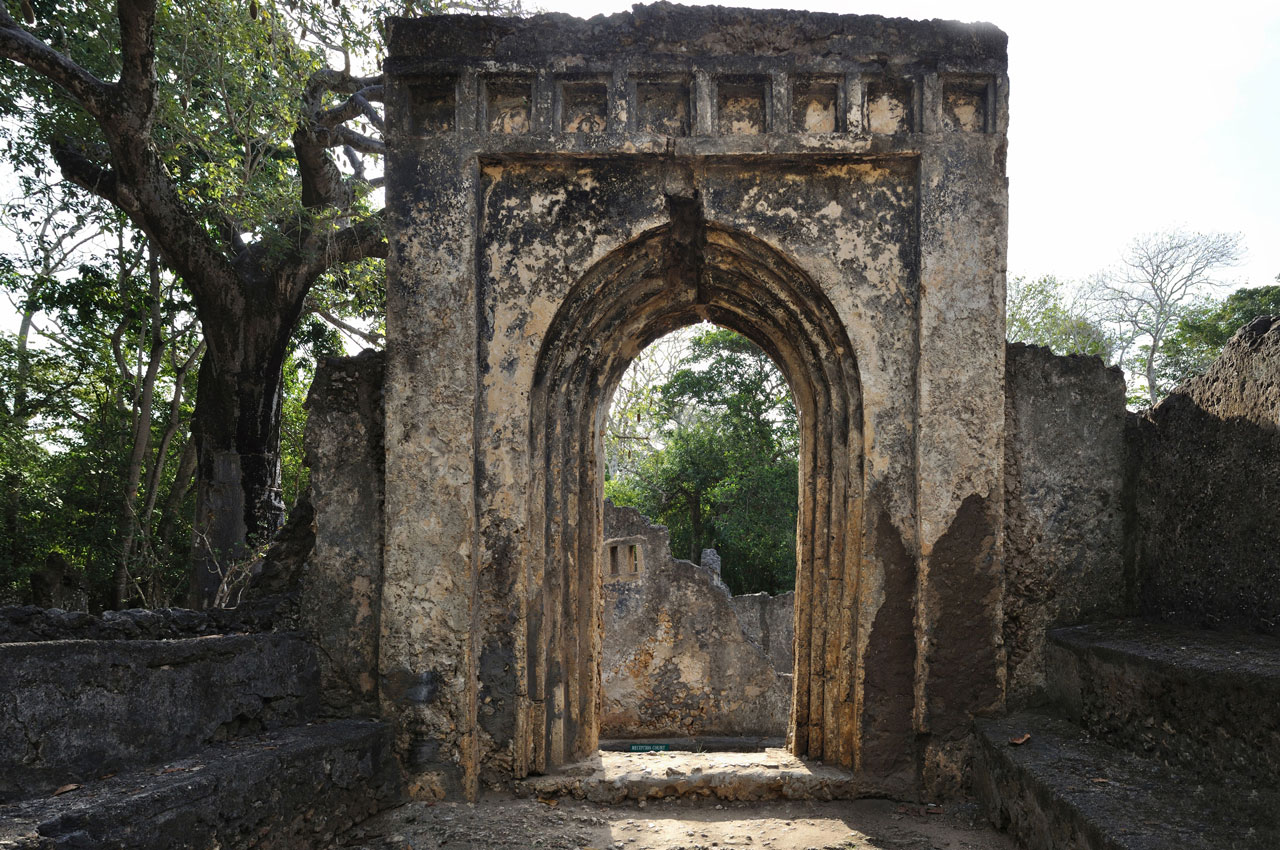Nine years prior to the Hijrah, Prophet Muhammed peace be upon him encouraged a group of Muslims to migrate to Abyssinia across the red sea from Arabia in order to flee the harsh conditions and the persecution that was facing them back in Mecca. The Christian king of Abyssinia received the refugees with honour and provided them with protection. A few years later, a larger group mostly dominated by the well-known Companions remained there for a period of fourteen years and only returned after the establishment of a Muslim community in the city of Madinah.
This pattern of migration continued even after the death of the Prophet peace be upon him and Africa being connected via the Indian Ocean continued to receive the Arabs, who in return carried along their faith and knowledge to the East African coast. In this article, we explore the legacy the influx of Muslim migrants to East Africa has left behind.
The Kizimkazi mosque
Located on the southern tip of Zanzibar Island, this mosque remains the oldest identified mosque on the East Coast of Africa. It was originally constructed in the early 12th century by Shirazi settlers and contains a Kufic inscription dating back to 1107 AD predating any other inscription found on the Coast. In addition to its 12th century Kufic inscription, the Kizimkazi mosque’s second signature feature is its 18th-century trefoil mihrab. It is believed that the trefoil mihrab may have influenced the design of many of the 19th-century mosques built in Zanzibar’s Stone Town.
The lost town of Gede, Kenya’s own Machu Pichu
Gede ruins are the remains of a Swahili town that trace its origin to the 12th century but was rebuilt with new walls in the 15th and 16th centuries. The town of Gede with its numerous inhabitants reached its peak in the 15th century. The Gedi Ruins on the coast of Kenya are a fascinating mystery. Archaeologists have found the remains of a large palace, mosque and multiple artefacts from as far away as China and Venice. Pointing to the existence of a once prosperous and unique civilisation.
It is believed that the last families left Gede in the first half of the 17th century. There are no historical records citing the reason behind the abandonment of Gede, but it is believed that it was a result of many factors including some raids and tribal menaces and also the falling water table as shown by the deepening of the well outside the Great Mosque.
Lamu Old Town
Described as the cradle of Swahili civilisation, Lamu became an important religious centre in East and Central Africa since the 19th century, it was a destination for scholars of both Islam and Swahili culture. The streets with impressive curved doors were heavily influenced by a variety of cultures including Arabian, Persian and Indian architectural styles. It is the oldest and best-preserved Swahili settlement in East Africa, retaining its traditional functions. Unlike other Swahili settlements, which have been abandoned along the East African coast, Lamu has continuously been inhabited for over 700 years.
Riyadha Mosque, Lamu Old Town
Ruins of Kilwa Kisiwani and Songo Mnara
Located on two islands close to each other just off the Tanzanian coast are the remains of two port cities, Kilwa Kisiwani and Songo Mnara. The larger, Kilwa Kisiwani, was occupied from the 9th to the 19th century and reached its peak of prosperity in the 13th and 14th centuries. In 1331-1332, the great traveller, Ibn Battuta made a stop here and described Kilwa as one of the most beautiful cities in the world.
Kilwa Kisiwani and Songo Mnara were Swahili trading cities and their prosperity was based on control of Indian Ocean trade with Arabia, India and China, particularly between the 13th and 16th centuries. Although the centuries have slowly eroded these great buildings the remains of the Great Mosque constructed in the 11th century and considerably enlarged in the 13th century is still visible. The ruins of Songo Mnara, at the northern end of the island, contains the remains of five mosques, a palace complex, and some thirty-three domestic dwellings.
The term for migration in Islam is hijra. The active participle of the word is muhajir (مهاجر) The Islamic tradition contains two related terms as well. They are: ghurba (غربة) gharib (غريب) Both terms have a connotation of being strange in a certain place. The difference between hijra (هجرة) and ghurba is that hijra involves permanent relocation while ghurba can be either permanent or temporary.
There is a very famous Arabic statement in this regard, “The stranger is blind even if he has eyes,” which indicates the vulnerability of the stranger and suggests that the stranger needs help and guidance. Regardless of the hardships that early Muslim settlers faced when they first arrived on the East Coast of Africa, the legacy they left behind still lives today to tell the story of their contributions to the spread of Islam across the Indian Ocean.









